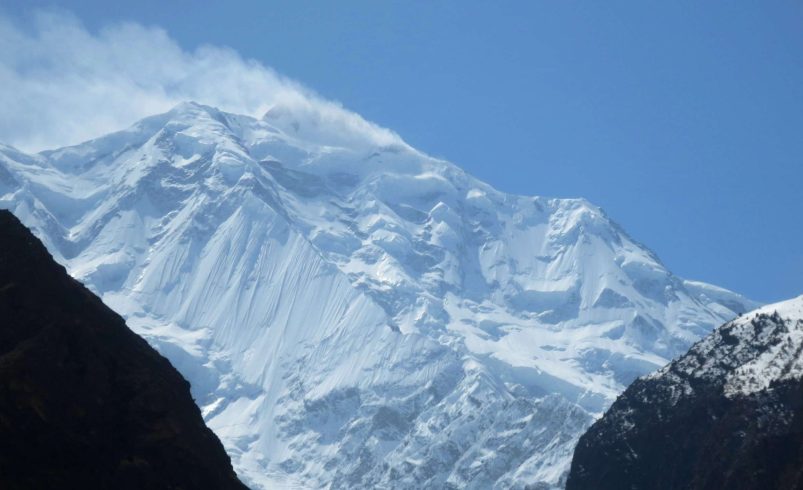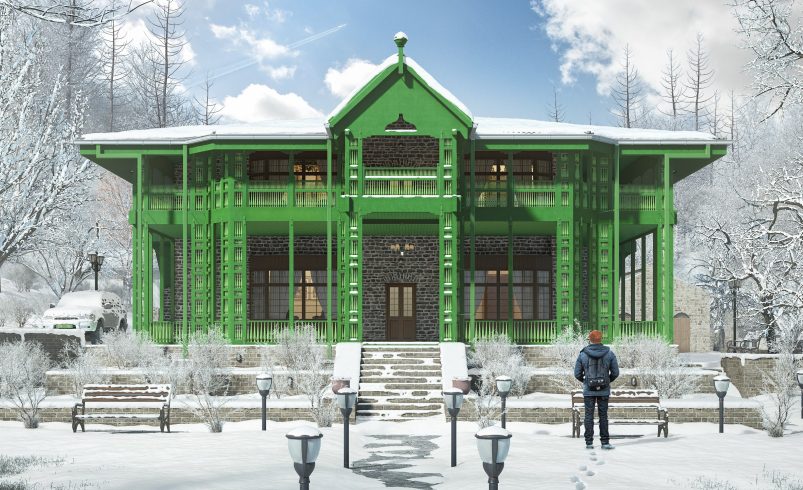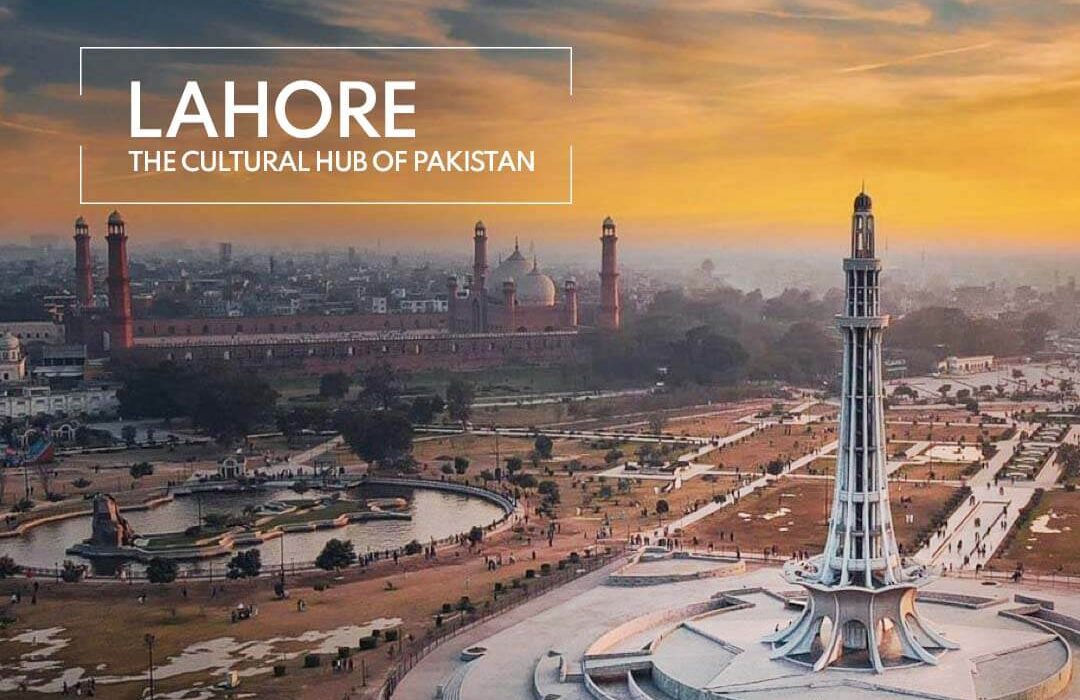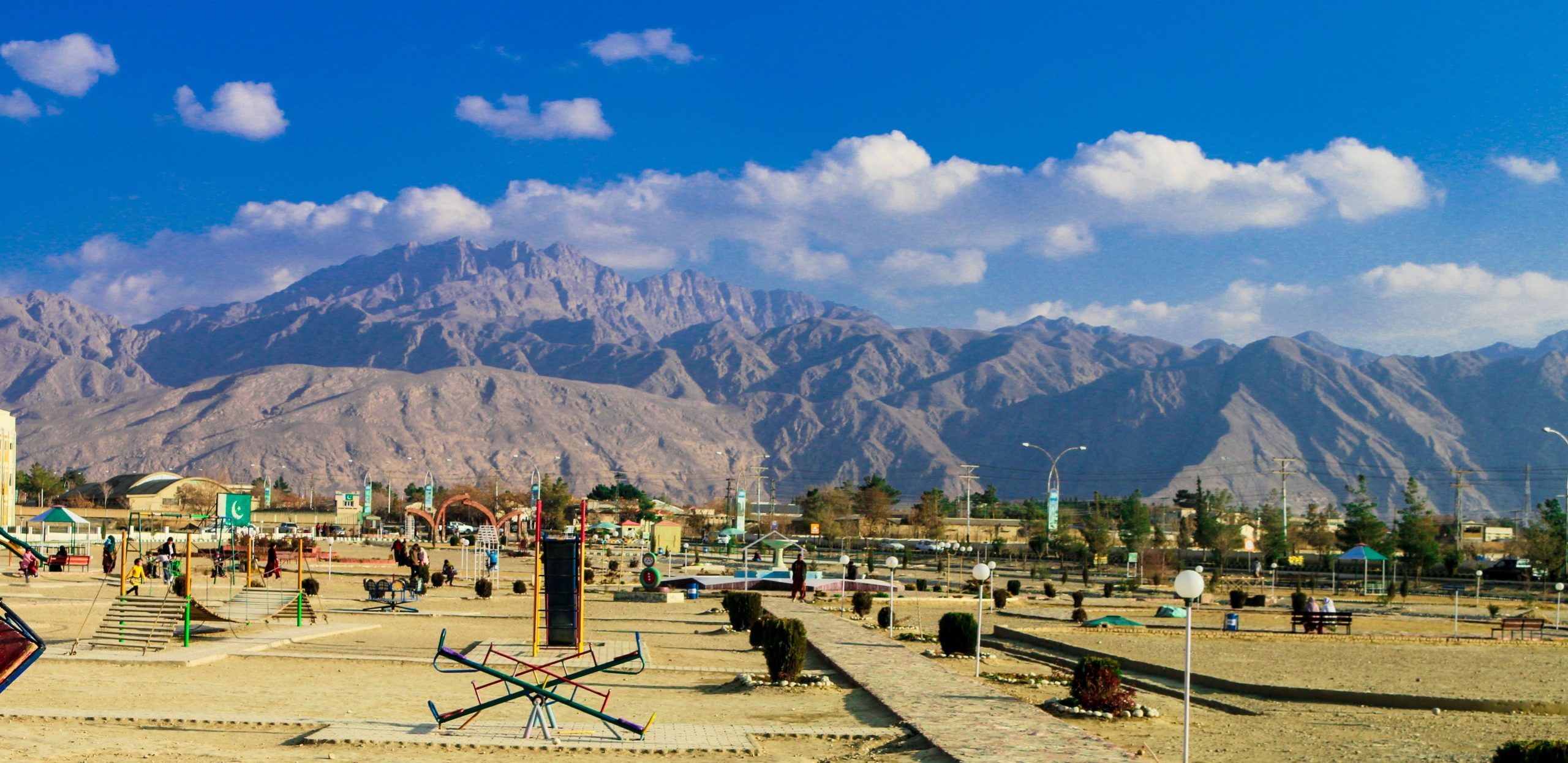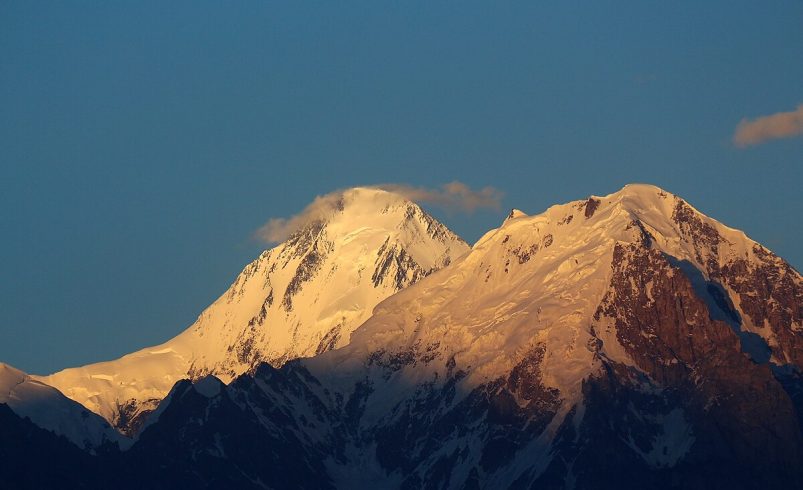
- July 28, 2025
🏔️ Introduction
Tucked away in the farthest reaches of the Karakoram Mountains, Momhil Sar stands as one of the least-known but most breathtaking peaks in Pakistan. With an elevation of 7,343 meters (24,091 feet), this towering summit is located in the Hispar Muztagh subrange and is revered among high-altitude climbers for its remoteness, technical climbing demands, and pristine beauty. The Momhil Sar expedition is not just a climb; it’s an immersive passage through rugged wilderness, isolated Wakhi villages, and some of the most untouched glacier systems in the region.
🗺️ Location and Geography of Momhil Sar
Momhil Sar lies in the Hispar Muztagh, a lesser-known subrange of the Karakoram. This range hosts several high peaks but remains overshadowed by the likes of K2 and Broad Peak, making Momhil Sar a hidden jewel for mountaineers seeking isolation and raw mountain adventure. The peak is located near the remote Shimshal Valley, close to Pakistan’s border with China.
The mountain is surrounded by vast glaciers, including the Momhil Glacier and Yazghil Glacier, and offers dramatic ice walls, sharp ridges, and breathtaking views. The terrain is marked by steep ascents, icefalls, crevasses, and technical sections requiring crampons, ropes, and alpine experience. The Momhil Sar expedition is considered moderately technical, especially the summit push, which involves mixed snow and ice climbing.
🧭 Famous Expeditions to Momhil Sar
Although Momhil Sar is not frequently climbed, it has drawn attention from elite mountaineers over the decades. With its remote setting, steep ice routes, and untouched ridgelines, this peak has challenged the few brave enough to attempt it.
⛏️ 🇦🇹 Austrian Expedition – First Ascent (1965)
The first successful ascent of Momhil Sar was made by an 🇦🇹 Austrian expedition led by the accomplished Hans Schell in 1965. This marked a milestone in the exploration of the Hispar Muztagh subrange.
- Leader: Hans Schell
- Style: Semi-supported expedition
- Approach Route: From Shimshal via Momhil Glacier
- Climbing Route: South Face
- Significance: First-ever summit, opened route information for future climbers
This team faced harsh weather, crevasse-ridden terrain, and remote logistical challenges but ultimately stood victorious on the peak. Their achievement remains one of the most iconic moments in Karakoram mountaineering history.
🇵🇱 Polish Reconnaissance Attempt – Early 1980s
In the early 1980s, a 🇵🇱 Polish reconnaissance team ventured into the Shimshal region to gather climbing data on peaks including Momhil Sar.
- Objective: Route analysis and possible summit
- Result: Did not summit due to harsh conditions
- Contribution: Provided new route insights for future expeditions
Although the peak wasn’t summited during this attempt, the team documented key glacial features and identified alternate access trails, enriching the mountaineering data for the area.
🌍 International Mixed Teams – 2000s Onward
Over the years, several international teams from 🇩🇪 Germany, 🇮🇹 Italy, 🇯🇵 Japan, and other nations have made alpine-style attempts on Momhil Sar.
- Style: Light, fast, unsupported climbs
- Challenge: Unpredictable weather and glacial instability
- Achievements: Partial summits and detailed route reports
- Notes: Most expeditions remained undocumented in formal alpine journals
These small, ambitious teams helped reaffirm the technical difficulty and isolation of Momhil Sar, emphasizing the need for experience, proper logistics, and in-depth acclimatization when planning a successful Momhil Sar expedition.
📅 Best Time for Momhil Sar Expedition
The optimal time to attempt the Momhil Sar expedition is during summer, particularly mid-June to mid-August, when weather conditions are most stable. This window provides longer daylight hours, relatively dry conditions, and less risk of avalanche or storm disruptions.
Climbers should avoid late autumn and early spring due to the extreme cold and unpredictable weather patterns. Winter is completely inaccessible due to snow-blocked routes and glacial hazards.
🚙 How to Reach Momhil Sar from Islamabad
The journey to Momhil Sar begins from Islamabad and involves a combination of flights, long drives, and multiday trekking.
From Islamabad, climbers can either take a flight to Gilgit or drive through the Karakoram Highway. From Gilgit, one must drive to Hunza (Karimabad or Passu), and then head toward the Shimshal Valley via a rough 4×4 track. The journey from Passu to Shimshal takes around 6 to 7 hours through steep and narrow valleys.
Upon reaching Shimshal, the trek to Momhil Sar Base Camp begins. This takes 4 to 5 days, depending on acclimatization and weather. The trek involves glacier crossings, moraine fields, and ascending ridgelines. Porters and mules are used for carrying equipment to the base camp.
🏞️ Places to Visit Along the Expedition
The journey toward Momhil Sar includes numerous scenic and cultural stops that enrich the overall experience.
Karimabad (Hunza) offers spectacular views of Ultar Sar, Ladyfinger Peak, and Rakaposhi. Ancient forts like Baltit and Altit Fort provide historical insight into the Hunza kingdom.
Passu is another iconic location, famous for its Cathedral-like rock spires and the Passu Glacier. The road from Passu to Shimshal is a dramatic adventure itself.
Shimshal Village is the heart of the Wakhi culture. Surrounded by fields and stone houses, it offers an authentic experience of remote mountain living. Local traditions, music, and hospitality add to the spiritual depth of the expedition.
🧗 Activities During the Momhil Sar Expedition
The expedition isn’t limited to just climbing. Explorers can indulge in a range of high-altitude adventures.
High-Altitude Climbing is the main activity, with climbers needing to establish base camp, Camp I, II, and possibly Camp III, depending on the route strategy. The final summit push involves snowfields and ridge climbs.
Glacier trekking is another demanding yet exhilarating part of the journey, especially when crossing the Momhil Glacier. Trekkers must navigate crevasses, seracs, and slippery moraines.
Photography opportunities are abundant—from sunrise over the Hispar peaks to dramatic glacial landscapes and portraits of Wakhi life.
Wildlife spotting is also possible. You may glimpse Himalayan ibex, snow pigeons, or even signs of snow leopards in the region.
🎉 Local Festivals and Cultural Experiences
In Shimshal, culture remains unspoiled. The Ginani Festival held in June celebrates the new harvest. It features traditional Wakhi songs, yak dances, and communal feasts.
Guests may also witness Wakhi storytelling nights, where elders share legends of the mountains. Occasionally, local polo matches are arranged in neighboring valleys, offering insight into the region’s equestrian traditions.
🏨 Accommodation Options for the Journey
Due to the remoteness of the area, accommodation is basic but adequate.
In Hunza and Passu, travelers can choose between budget guesthouses or mid-range hotels, costing between PKR 3,000 to PKR 10,000 per night.
In Shimshal, options are limited to homestays and community lodges, charging PKR 2,000 to PKR 5,000 per night. Facilities include shared bathrooms, home-cooked meals, and warm beds.
At Base Camp and higher camps, climbers must rely on tents, often arranged by their expedition operator.
🍽️ What to Eat on the Trail
During the expedition, meals are a mix of local cuisine and energy-packed climbing food.
In Hunza and Shimshal, travelers can enjoy chapshuro (stuffed meat bread), molida (wheat and meat mash), buttered tea, and dry fruits. Shimshali women are known for preparing unique soups with yak meat and mountain herbs.
During the climb, food includes instant noodles, protein bars, freeze-dried meals, and high-calorie trail mix. Hydration is key, so climbers drink boiled glacier water or purified stream water.
💰 Estimated Budget for Momhil Sar Expedition
| Expense | Cost (PKR) |
|---|---|
| Islamabad–Gilgit (flight/road) | 10,000 – 20,000 |
| Gilgit–Shimshal (road) | 10,000 – 15,000 |
| Hotels/Guesthouses (7–10 days) | 30,000 – 50,000 |
| Expedition Meals & Supplies | 30,000 – 60,000 |
| Guide, Porters, Cook (20–25 days) | 200,000 – 300,000 |
| Climbing Permit & LO | 150,000 – 200,000 |
| Equipment Rental (optional) | 100,000 – 200,000 |
| Total Estimate | 500,000 – 800,000 |
🗺️ Suggested Day-by-Day Itinerary for Momhil Sar Expedition
Climbing Momhil Sar requires precise planning, high-altitude experience, and adaptation to remote wilderness conditions. Below is a suggested 30-day expedition itinerary ideal for a semi-supported team aiming for summit success.
📍 Day 1: Arrival in Islamabad 🇵🇰
Arrive at Islamabad International Airport. Transfer to hotel, rest, and meet expedition logistics manager. Verify gear and documentation.
Altitude: 540m
🚗 Day 2: Islamabad to Gilgit (by Flight or Road)
Fly to Gilgit (1-hour flight) or drive via Karakoram Highway (16–18 hrs).
Altitude: 1,500m
Note: Flight depends on weather.
🚙 Day 3: Gilgit to Hunza (Karimabad)
Drive along the scenic Hunza Valley, passing Rakaposhi and Diran peaks.
Distance: 100 km
Time: 3–4 hrs
Altitude: 2,440m
🚐 Day 4: Hunza to Passu to Shimshal
Travel from Karimabad to Shimshal Valley via Passu. This drive is adventurous, with narrow cliffside roads.
Time: 6–7 hrs
Altitude: 3,100m
🎒 Day 5: Rest & Acclimatization in Shimshal
Spend the day exploring Shimshal village, engaging with locals, and short hikes.
Purpose: Acclimatization and gear preparation.
🏞️ Day 6: Trek to Zardgarben
Start trekking towards Zardgarben, a high pasture point on the route.
Time: 6–7 hrs
Campsite Altitude: 3,800m
🏕️ Day 7: Trek to Momhil Sar Base Camp
Trek along the Momhil Glacier. Establish Base Camp at the foot of Momhil Sar.
Time: 6–8 hrs
Altitude: 4,500m
Note: Stunning views of Trivor and Yukshin Gardan Sar.
🛠️ Day 8–10: Base Camp Setup & Acclimatization
Set up communication, kitchen tents, and rest. Begin short acclimatization hikes.
Activities: Load carry to Camp I, crampon practice.
🧗 Day 11: Carry to Camp I and Return
Carry gear to Camp I (approx. 5,300m) and return to BC for sleep.
Goal: Acclimatization and load ferrying.
🏔️ Day 12: Move to Camp I
Move to Camp I with essential supplies. Overnight stay at high altitude.
🧭 Day 13: Rest at Camp I
Rest and assess route ahead for safety and weather conditions.
🧗♂️ Day 14: Carry to Camp II and Return
Carry equipment and food to Camp II (approx. 6,000m), return to Camp I.
Terrain: Ice slopes, possible crevasses.
🏕️ Day 15: Move to Camp II
Move to Camp II with gear. Overnight stay. Conditions are harsh and cold.
🔭 Day 16: Explore Route to Camp III
Scout route towards Camp III. Prepare fixed lines if needed.
🏞️ Day 17: Rest and Monitor Weather
Weather can be unpredictable; rest and wait for favorable summit window.
🗻 Day 18: Carry to Camp III and Return
Carry rope, food, oxygen (if any) to Camp III area (approx. 6,400m), return.
🏕️ Day 19: Move to Camp III
Move to Camp III for final acclimatization and summit push staging.
🌤️ Day 20: Rest Day at Camp III
Crucial rest and weather observation day. Review summit gear and health.
🚩 Day 21: Summit Attempt on Momhil Sar (7,414m)
Begin early morning (2:00 AM) for summit push. Long day with icy ridges, crevasses, and steep snow walls.
Estimated Time: 10–14 hrs
Return: To Camp III or Camp II depending on energy/weather.
💤 Day 22: Descent to Base Camp
Safely descend to Base Camp. Monitor health and rest thoroughly.
🏞️ Day 23–24: Contingency Days
Used in case of poor weather or extra acclimatization need.
🎉 Day 25: Celebration & Load Pack at Base Camp
Celebrate successful expedition. Begin packing camp gear and waste disposal.
🥾 Day 26: Trek Back to Zardgarben
Start descent journey.
Time: 6–7 hrs
🚶♂️ Day 27: Trek to Shimshal
Reach Shimshal village. Rest and enjoy local hospitality.
🚙 Day 28: Drive to Hunza
Drive back to Hunza. Comfortable lodge stay with optional sightseeing.
🚗 Day 29: Drive to Gilgit
Short scenic return to Gilgit for flight or overland return.
🛫 Day 30: Fly or Drive to Islamabad
Final return to Islamabad. End of the Momhil Sar expedition journey.
📍 Nearby Attractions and Distances
| Destination | From Shimshal | Mode |
|---|---|---|
| Passu | 50 km | Jeep |
| Hunza (Karimabad) | 100 km | Jeep |
| Khunjerab Pass | 120 km | Jeep |
| Hopper Valley | 130 km | Jeep |
🎒 Travel Packing Checklist
- Technical Down Jacket
- Sleeping Bag (–20°C)
- Climbing Harness and Helmet
- Ice Axe and Crampons
- Trekking Poles
- Glacier Goggles
- Personal First Aid Kit
- Sunscreen SPF 50+
- Trekking Boots
- Thermal Base Layers
- Satellite Communication Device
🚑 Emergency Contacts and Health Guidelines
Rescue 1122 Gilgit: 05811-920722
Shimshal Medical Center: Local first aid only
LO Coordination Office Gilgit: Through expedition operator
Gilgit Police Helpline: 05811-920018
Health Precautions include gradual acclimatization, avoiding dehydration, and carrying Altitude Sickness (AMS) medication like Diamox. Always carry your medical records and international travel insurance.
❓ FAQs
What is the elevation of Momhil Sar?
Momhil Sar stands at an altitude of 7,343 meters, making it one of the highest peaks in the Hispar Muztagh.
Is Momhil Sar suitable for beginners?
No. The Momhil Sar expedition is suitable only for experienced climbers familiar with technical alpine conditions.
How many days does the expedition take?
A full expedition typically takes 25 to 30 days, including acclimatization, climbing, and return.
Are porters and guides available?
Yes. Local Wakhi porters are available from Shimshal, and registered mountain guides can be hired from Hunza or Gilgit.
What permits are required?
A high-altitude climbing permit and a liaison officer (LO) are mandatory for climbing Momhil Sar.
What’s the best time to climb Momhil Sar?
The ideal window is from mid-June to mid-August, when weather is most stable.
🏁 Conclusion – Momhil Sar Expedition
For those who seek more than just a climb—for those who seek solitude, unspoiled terrain, and high-altitude adventure—the Momhil Sar expedition is the perfect pursuit. This majestic peak in Pakistan’s Karakoram Range is not just a destination; it’s a calling for those with the passion, patience, and perseverance to go beyond the obvious and into the unknown. As one of the last true wilderness climbs in the Karakoram, Momhil Sar offers not only a physical challenge but a deeply human journey into the heart of the mountains.


